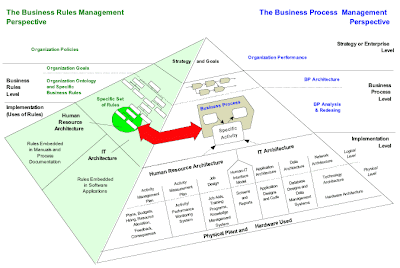Looking for Intelligence

I am fascinated by the emerging thinking about how to individually and corporately thrive in complex environments. A common thread in these discussions is the growing dissatisfaction around our experience of optimizing known processes and activities. It seems that the more we use technology to eliminate one type of human effort, the more we need new human capabilities to bridge the glaring gaps. This awareness manifests itself in a variety of contexts: Highly controlled sequential development vs. Agile methodologies Capability maturity vs. Value innovation Rigorously implemented workflow vs. Adaptable decision support Six sigma continuous improvement vs. Creative process innovation Business intelligence data vs. Business process management Enterprise Project management vs. Dynamic social collaboration Directed leadership vs. The wisdom of crowds Tightly integrated implementations vs. Autonomous loosely coupled services It's Not a War Although the proponents of any emphasis te...

